A Cat Friendly Home – Make Your Cat Happy in Five Easy Steps
Welcome to the first post in our new series, Enriching Your Cat’s Life. Today we’re going to discuss the importance of creating a cat friendly home.
A Cat Friendly Home
Indoor cats still retain the behavioral instincts of their wild ancestors which include hunting, scratching, and hiding. A cat friendly home provides an enriching environment that is safe, stimulating, and allows your cat to perform their natural behavior. A cat’s environmental needs include not only their physical surroundings but also their social interactions with people and other pets.
"Having a basic understanding of the cat’s species-specific environmental needs and how cats interact with their environment will provide a foundation for addressing these fundamental requirements." AAFP and ISFM Feline Environmental Needs Guidelines
Make Your Cat Happy in Five Easy Steps
Provide a Safe Place
Cats need their private, secret hideaways to retreat to; one that makes them feel safe and protected. The goal is to give your cat a feeling of enclosure, isolation, and/or seclusion. Ideally, there should be one safe/private space per cat in the household. Below are a few ideas to accomplish this.
Cardboard Boxes
The quintessential cat hiding spot! When a new box comes into our home, Lexy quickly stakes her claim on it and enjoys retreating to it when she needs some personal space and time. Boxes that are strategically placed around the house give your cat a wonderful refuge.
A Cat Carrier
A cat carrier is a perfect place for your cat to hide when they need a break from daily activities going on in the house. Every time I leave ours out Lexy goes right into it. I always leave a pad in the bottom for some added comfort. (This tip also has another benefit; the carrier smells more like home and reduces stress when you need to transport your cat to the vet!)
Wall Perches
Cats are natural climbers and love to view their environment from above. A wall perch/shelf provides a high resting place for them to relax. You want to make sure the shelf is wide and long enough for your cat to stretch out, and that it is located in a spot where they are able to get up and down from it easily and safely.
Our friends at Kitty Cat Chronicles made a fabulous climbing system in their home. (Lola and Lexy are very jealous!)

Provide Multiple and Separated Key Environmental Resources
Lola and Lexy have several scratchers around the house, and their feeding stations are separated; one in the kitchen and one in the living room. And I just made a major change in our litter box area to reduce “litter box stalking” and reduce stress.
Lexy has plenty of sleeping areas available that she loves. And as long as Lola has her own pillow on the bed, she's a happy girl.
Provide Opportunities for Play and Predatory Behavior
Toys made from feathers and fur that can be easily tossed into the air or pounced on are just like prey to your cat. (Lola just loves tossing her mouse into the air.) Large, soft toys that can be raked and bitten also satisfy a cat’s predatory play needs. (It is helpful to remember that to avoid frustration your cat needs to capture their prey from time to time.) A helpful hint to prevent your cat from getting bored is to rotate their toys.
Food puzzle toys help imitate hunting for food. You can also toss treats or kibble for your cat to chase, or hide food in multiple places so your cat feels like they are locating and capturing their food.
Interactive toys such as wand toys, a toy mouse you can pull across the floor on a string, or a rollerball toy are great examples. My girls love all three of these. Another favorite is the Cat Dancer Toy.
Provide Positive, Consistent and Predictable Human-Cat Interactions
A majority of cats in a study conducted in 2017 by Dr. Kristen Vitale et al preferred interacting with a person more than eating or playing with a toy. And in a study conducted in 2019, the same team found that cats display distinct attachment styles toward human caregivers. There is no doubt that cats benefit from and enjoy regular interaction with their humans.
Not all cats have the same preferences when it comes to interacting with us, though. Their individual preferences will determine how much they enjoy snuggling on your lap or being petted, groomed, talked to, and played with; all of which may change as they age. The more you know your cat’s preferences, the more you’ll both enjoy your special time spent together.
Provide an Environment That Respects the Importance of the Cat's Sense of Smell
Cats evaluate their environment for security and comfort through their sense of smell. They mark their territory by rubbing their face and body against items, which establishes natural boundaries in their core living area by depositing their pheromones. We need to do our best not to interfere with the scent profiles they have created.
We can do this by avoiding heavily scented cleaners or litter; taking our shoes off at the front door to avoid bringing in strange smells into the home; and by providing scratching areas that allow a cat to deposit its scent through glands in the pads of its feet.
When your cat’s bedding needs a wash, do it on a rotating basis. This way there is always one bed or blanket that contains familiar scents. Lexy adores her MYLAP Pet Bed, which is covered by a pair of my pants and carries my familiar scent.
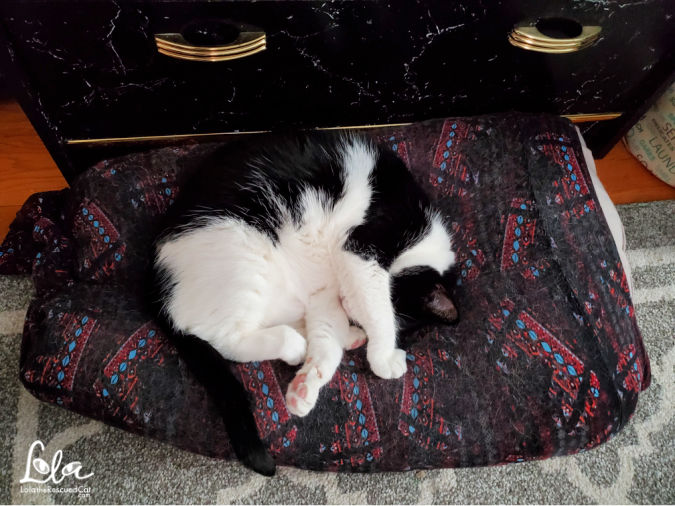
Conclusion
Providing our cats with an enriched environment keeps them healthier physically and psychologically, and helps them live longer lives with us. When we meet their environmental needs we are ensuring their overall optimal wellbeing.
Check back for the next installment in this series when we'll be discussing some ways to excite your bored cat.
What are some things you do to make your home cat friendly? We'd love to hear about them in the comments.
Dawn
Lola The Rescued Cat is a member of the Amazon Affiliates Program. This post contains affiliate links. If you make a purchase using one of the links we earn a small commission. This does not affect your purchase price.





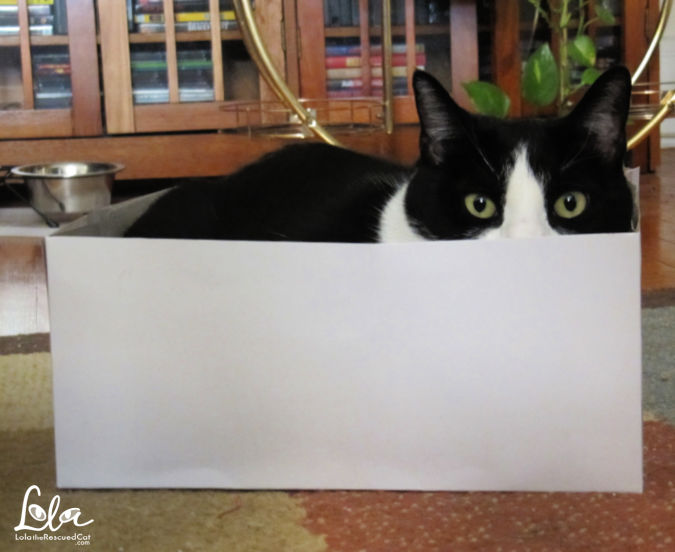
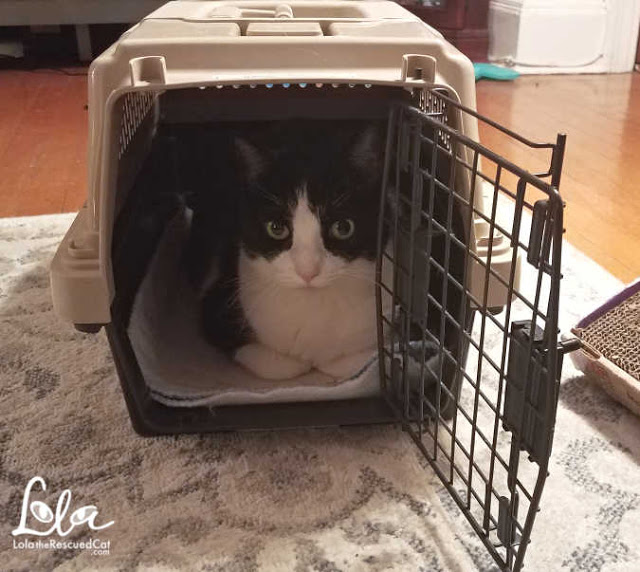
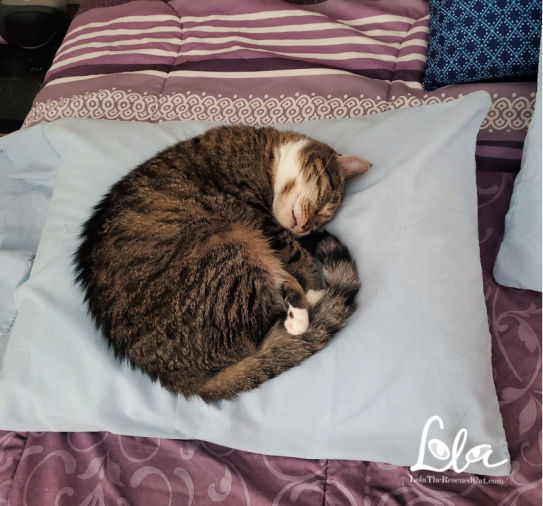
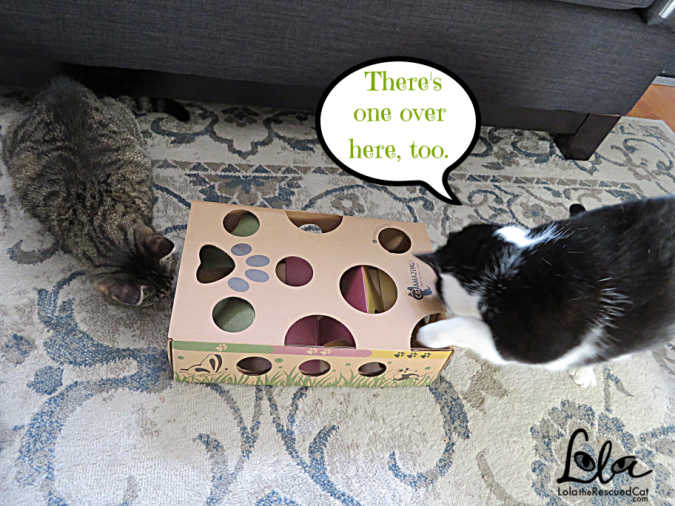

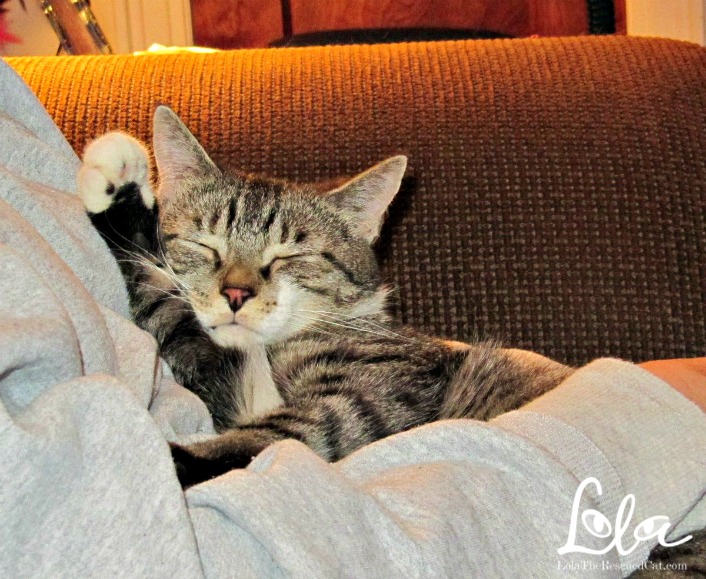
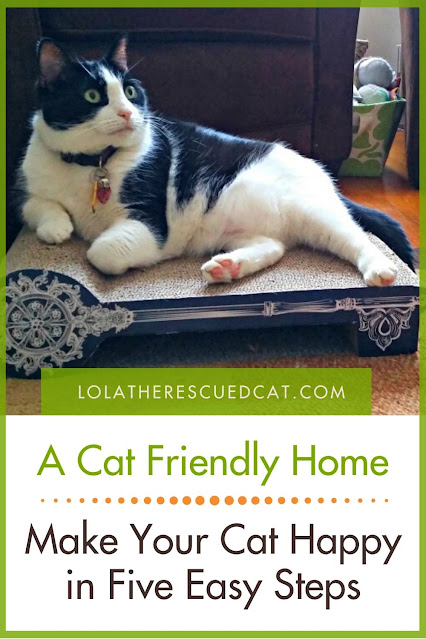
Post a Comment